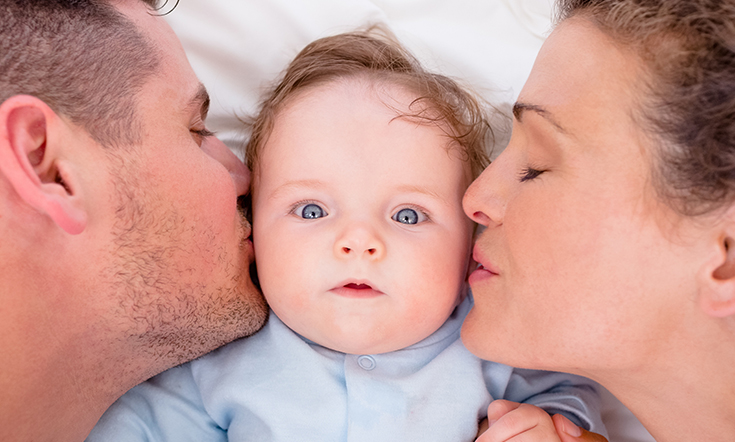

A basal body temperature measurement is an accurate and free method of working out the time of ovulation. The basal body temperature method also allows you to figure out whether your cycle is regular and whether you are pregnant.
What Is Basal Body Temperature?
Basal body temperature is the lowest temperature achieved by the entire body during rest (commonly while asleep). Basal body temperature (BBT) is one way of predicting the day of ovulation, which in turn can help you work out the best time to have sex to increase the chances of getting pregnant.
BBT is your temperature when you first wake up in the morning (or following a minimum of three hours of uninterrupted sleep). It needs to be taken prior to any physical activity so should be taken whilst still in bed.
Also known as the sympto-thermal method, this particular contraceptive method involves charting your core body temperature throughout your menstrual cycle. Since your temperature rises slightly around the time of ovulation, finding the sustained increase in your core temperature will help you determine when you are most fertile.
You can also use other ways to pinpoint your time of ovulation such as:
- Understanding your menstrual cycle
- Checking your cervical mucus
- Using an ovulation calendar
- Keeping an eye on your luteal phase
How To Take Your Basal Body Temperature?
You can take your BBT by using a special BBT thermometer. You are attempting to detect as little as a two-tenths of a degree of difference in temperature, so choosing a high quality thermometer and following directions are very important.
Your BBT temperature is a ‘resting’ or ‘base’ temperature. That means that your BBT should be measured before any kind of physical activity, after a minimum of three to four hours of sleep. Take your temperature first thing each morning before you get out of bed and prior to eating or drinking.
You can measure your temperature by placing the thermometer under your tongue and leaving it there until it beeps. Record the temperature to within 1/10 of a degree and document the reading.
How To Chart Your Basal Body Temperature?
What you will need:
- A basal thermometer (This thermometer shows minute degree changes, in contrast to a regular thermometer).
- paper & pen
- alarm clock
- printed graph to record your temperatures
What to do:
- The first morning of your period is the start of each cycle. Indicate the monthly period with an X to the chart, starting on day one of your cycle
- Insert day of month in space provided
- Place everything in arms reach of your bed, including the alarm clock
- Ensure you’ve had at least three hours of consecutive sleep, but preferably five hours before you take your temperature
- Set the alarm at the time you will get up each day. It is important to take your temperature at the same time every morning
- When the alarm beeps, don’t get out of bed, roll over and turn it off.
- Take your temperature. Place the basal thermometer straight into your mouth until the thermometer beeps. Do this every morning, even during your period
- Record your daily temperature on the chart, mark the days you had sexual intercourse by circling the temperature dot. You will need to begin a new chart with each new cycle.
What Does Your Temperature Means?
For some women, 35 to 36.5 degrees is regarded as normal prior to ovulation. Temperature may dip by .2 or .3 degrees prior to ovulation, then it will rise until it reaches around 37 degrees. By charting the variations in one-tenth degree increments, you can figure out when ovulation has taken place. Typically an increase of at least .2 to .3 degrees will take place at ovulation, though for different women the temperature raises might be sudden or gradual. If conception has taken place your temperature will remain on the higher side. If the egg was not fertilised your temperature will drop a couple of days before your period arrives. Over time, BBT chart will guide you anticipate ovulation.
You can also try our free ovulation calculator to easily pinpoint your ovulation period.






















